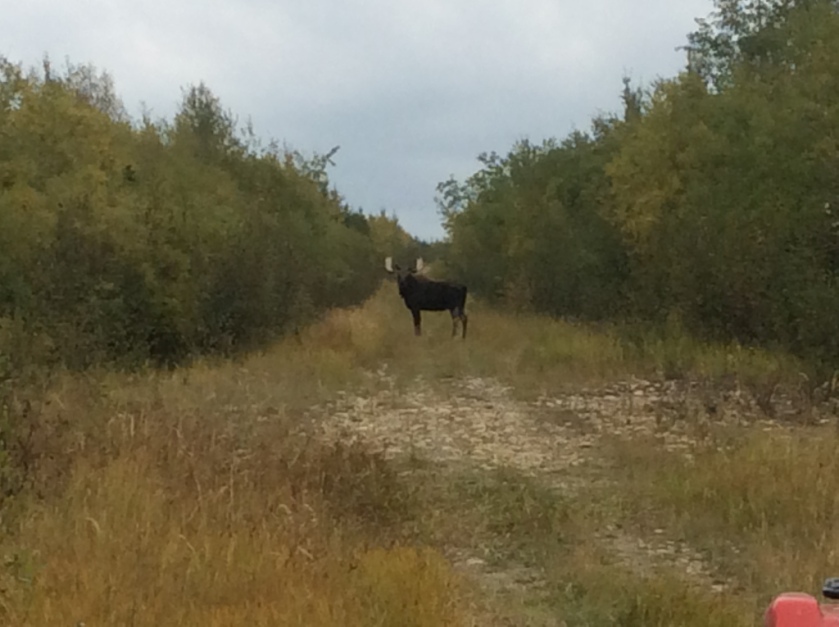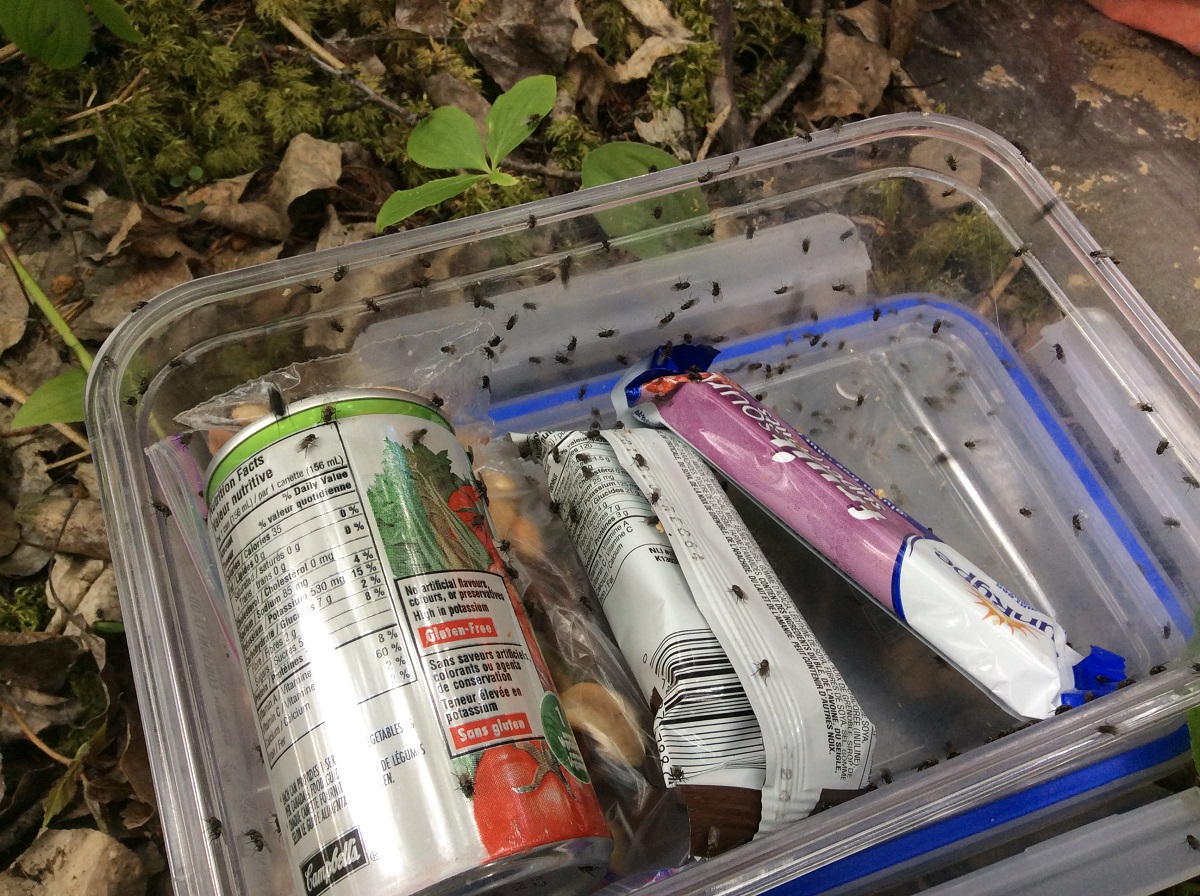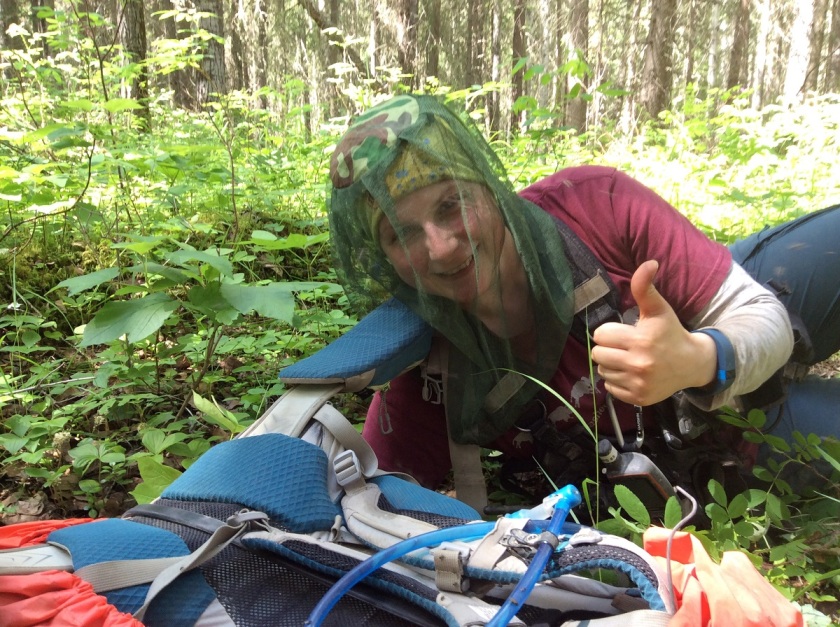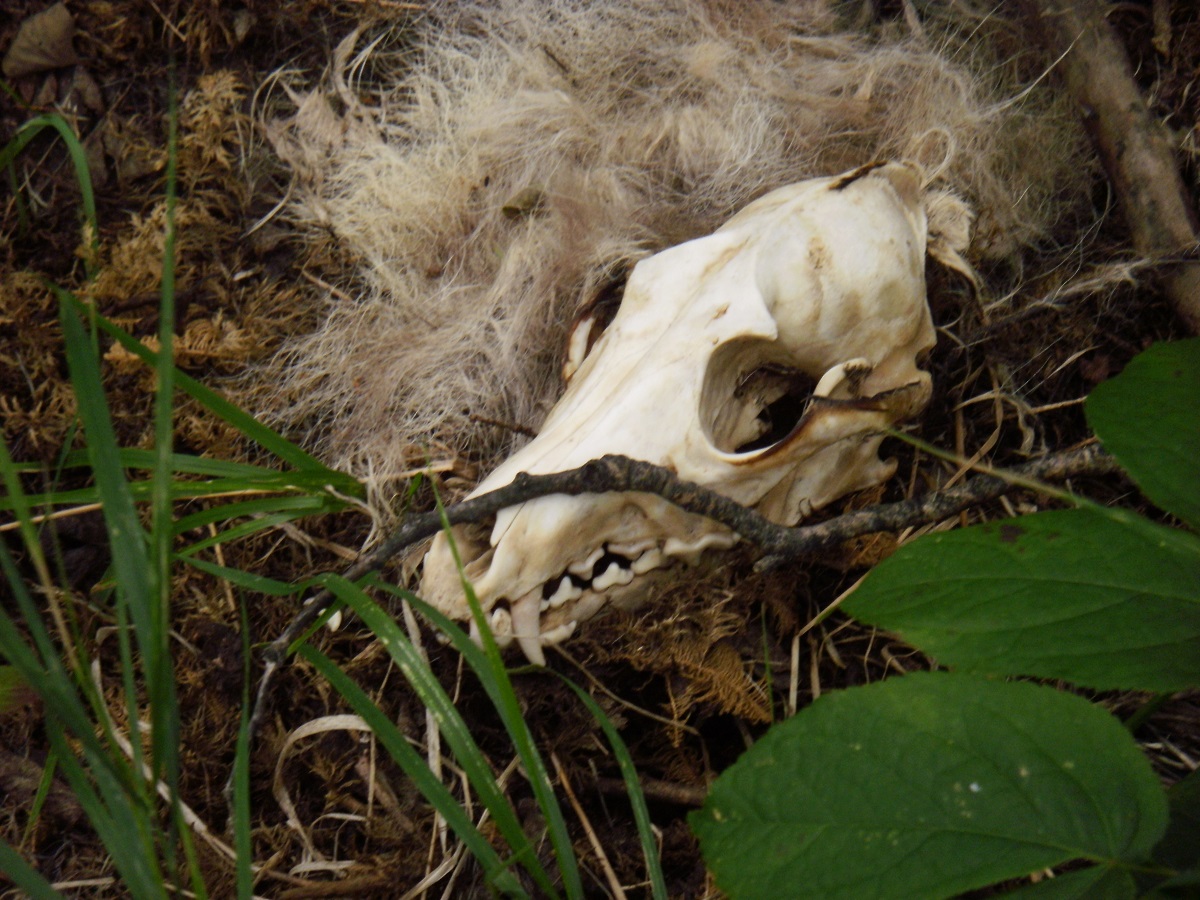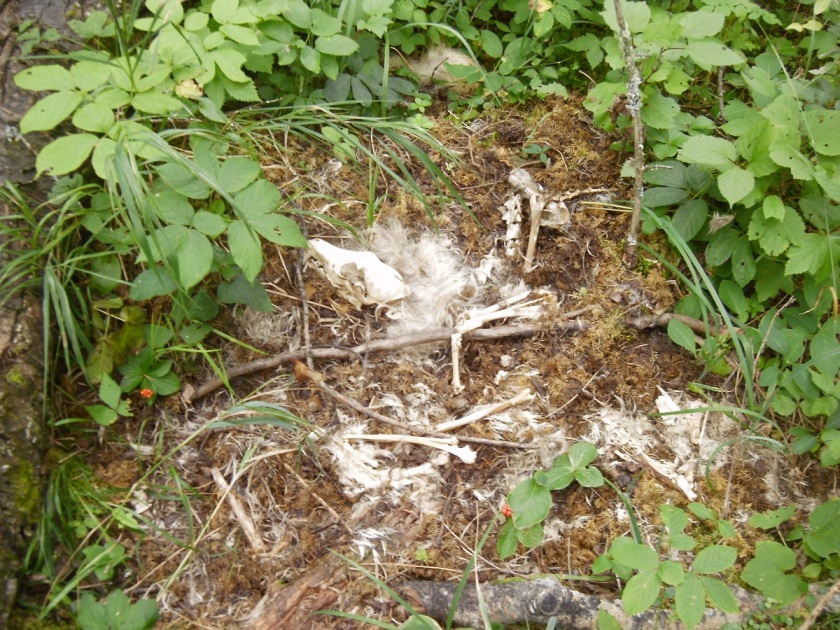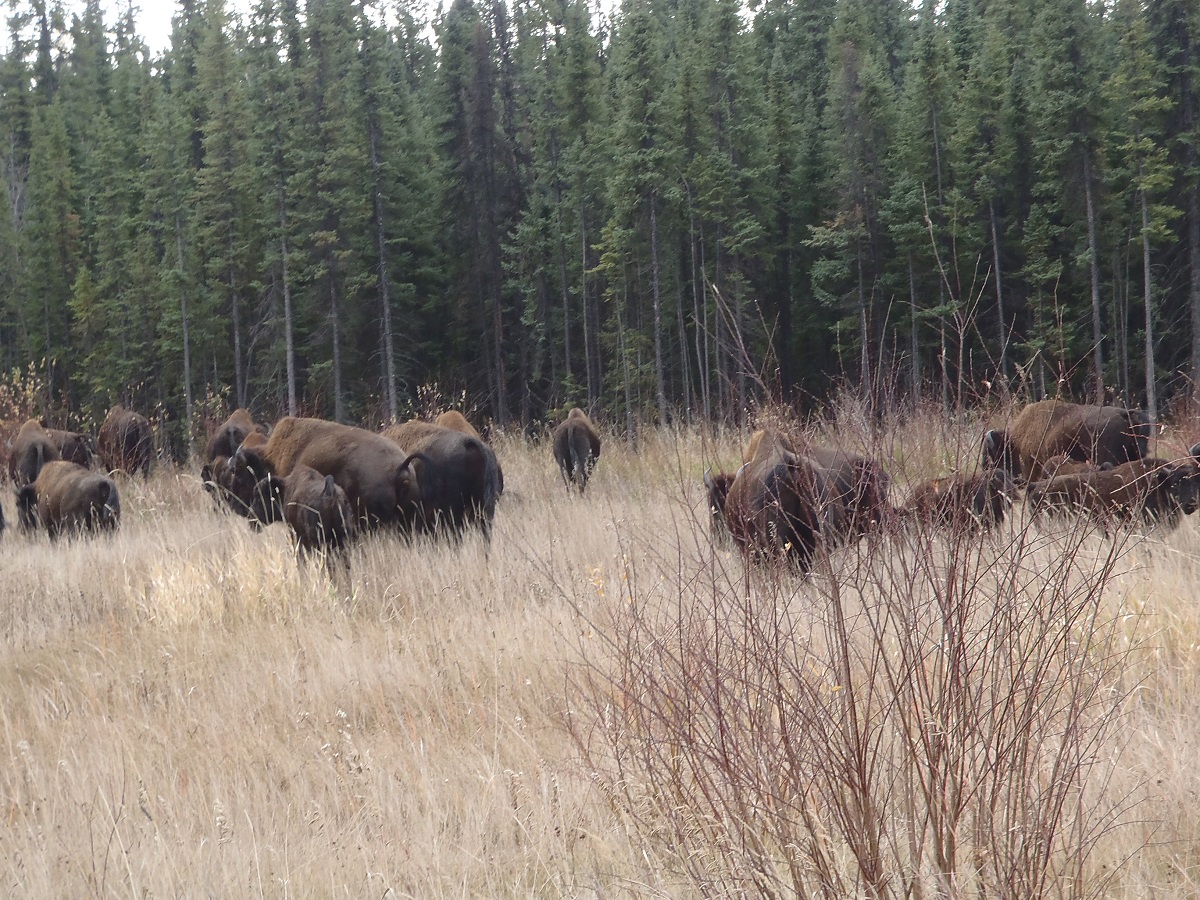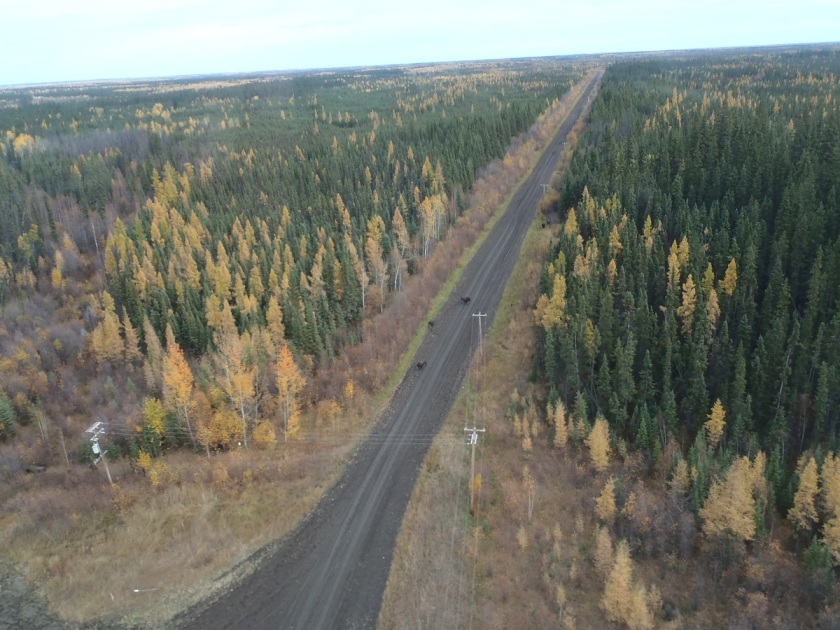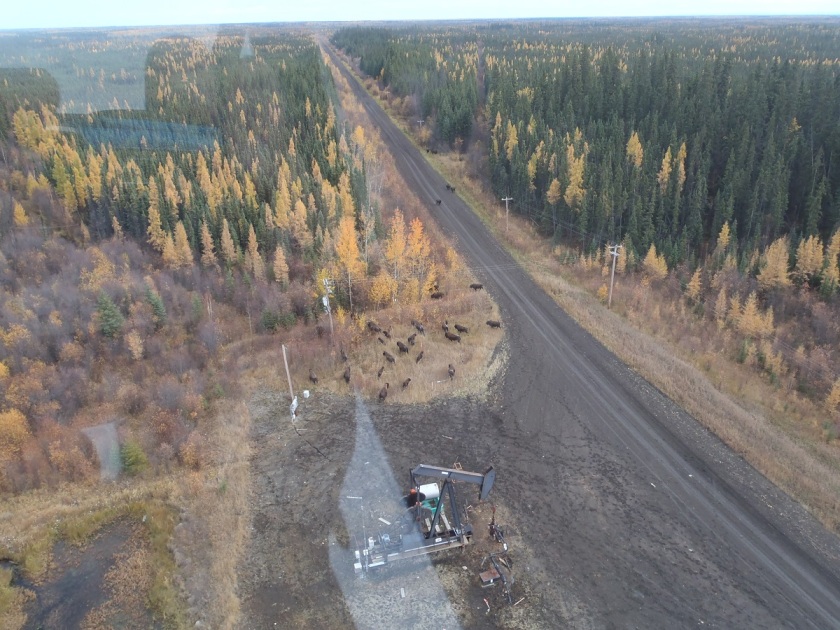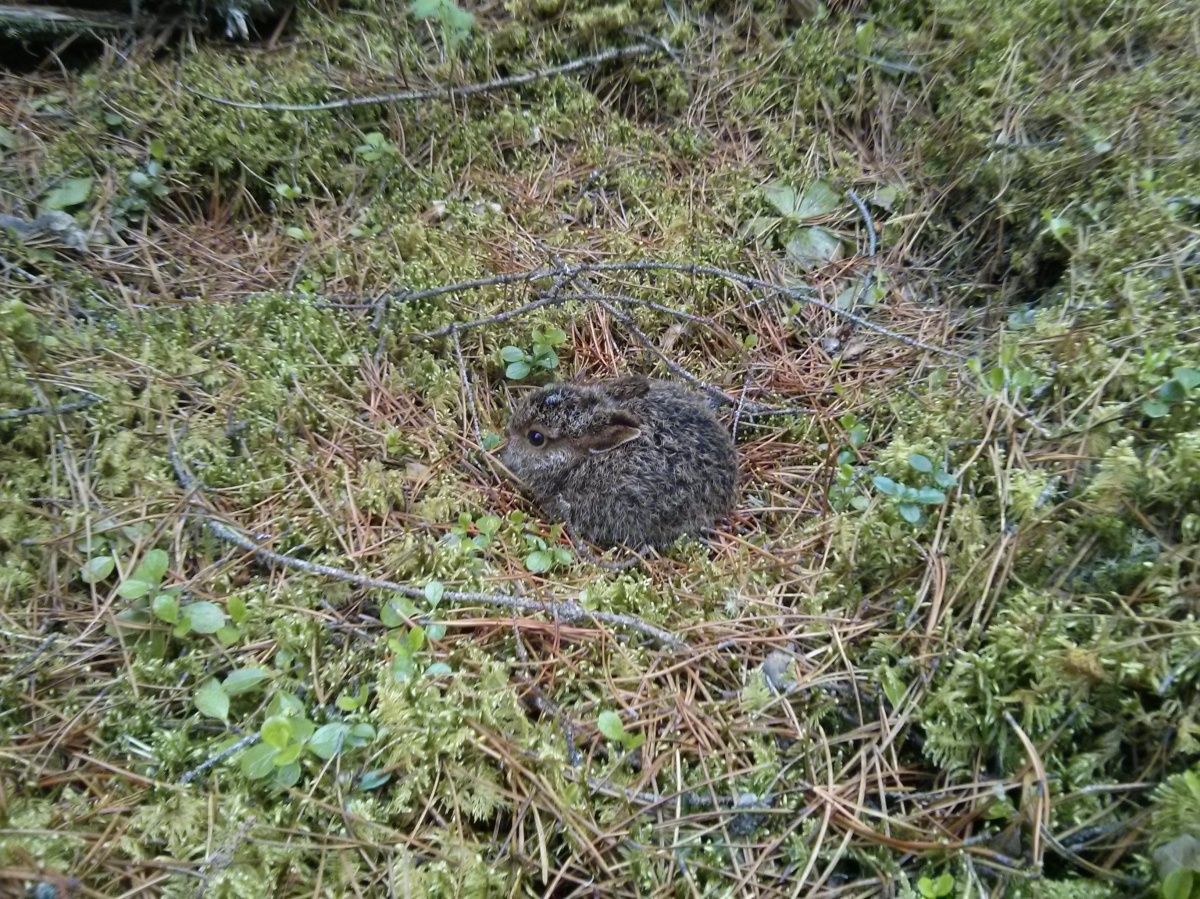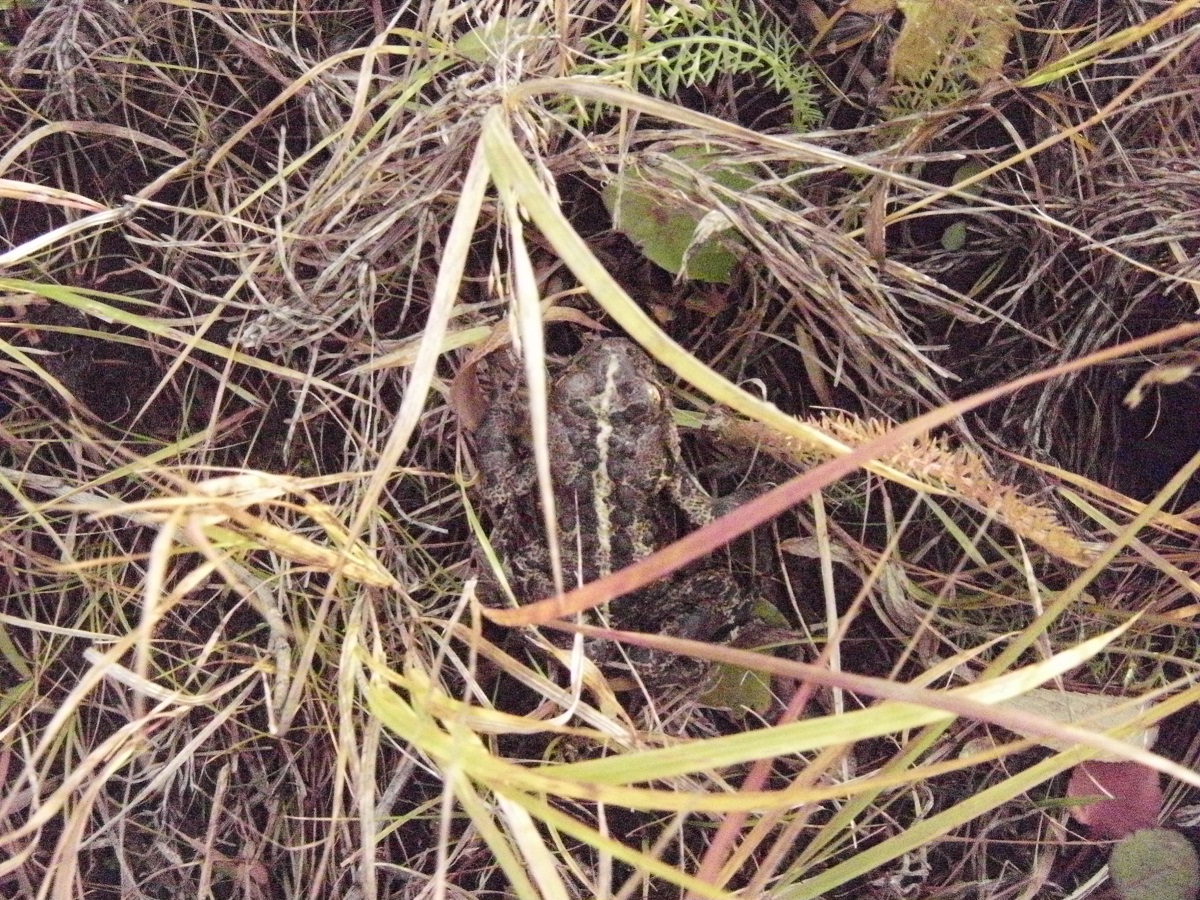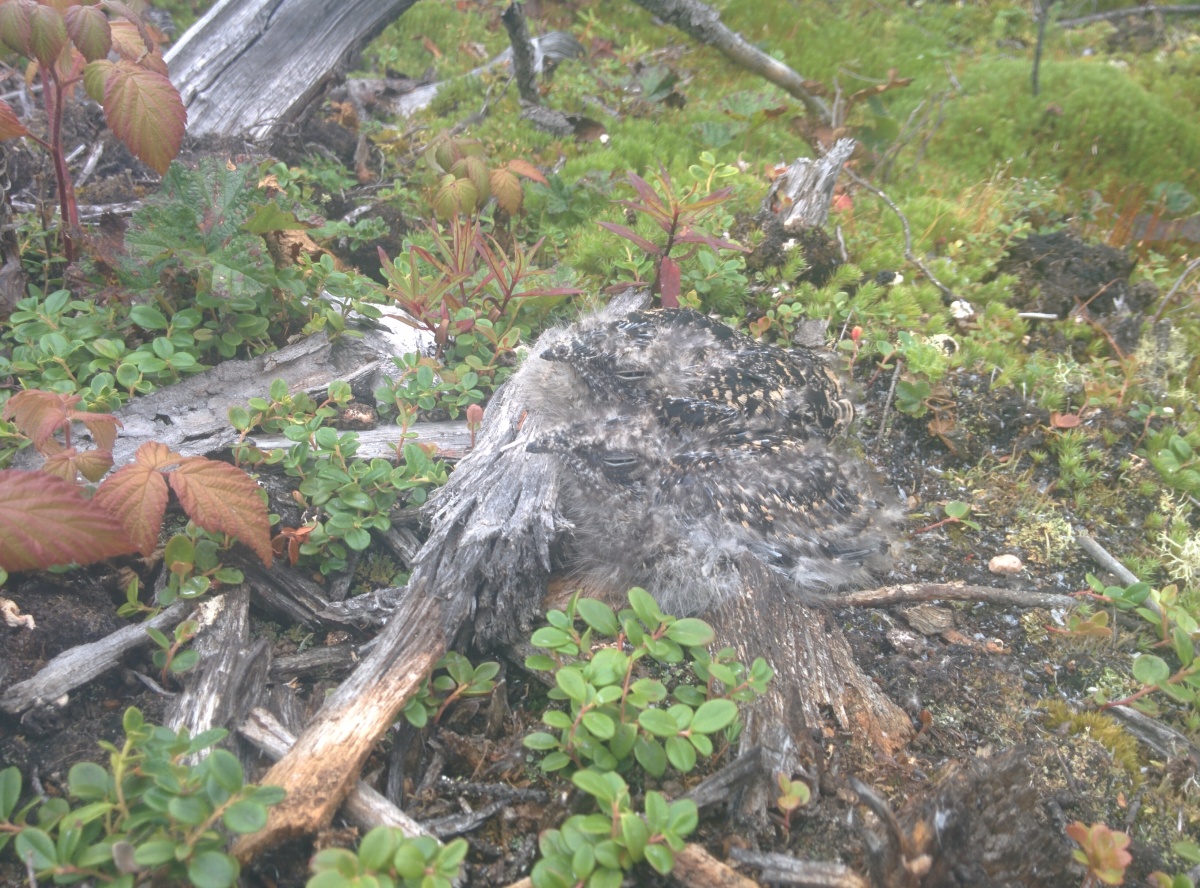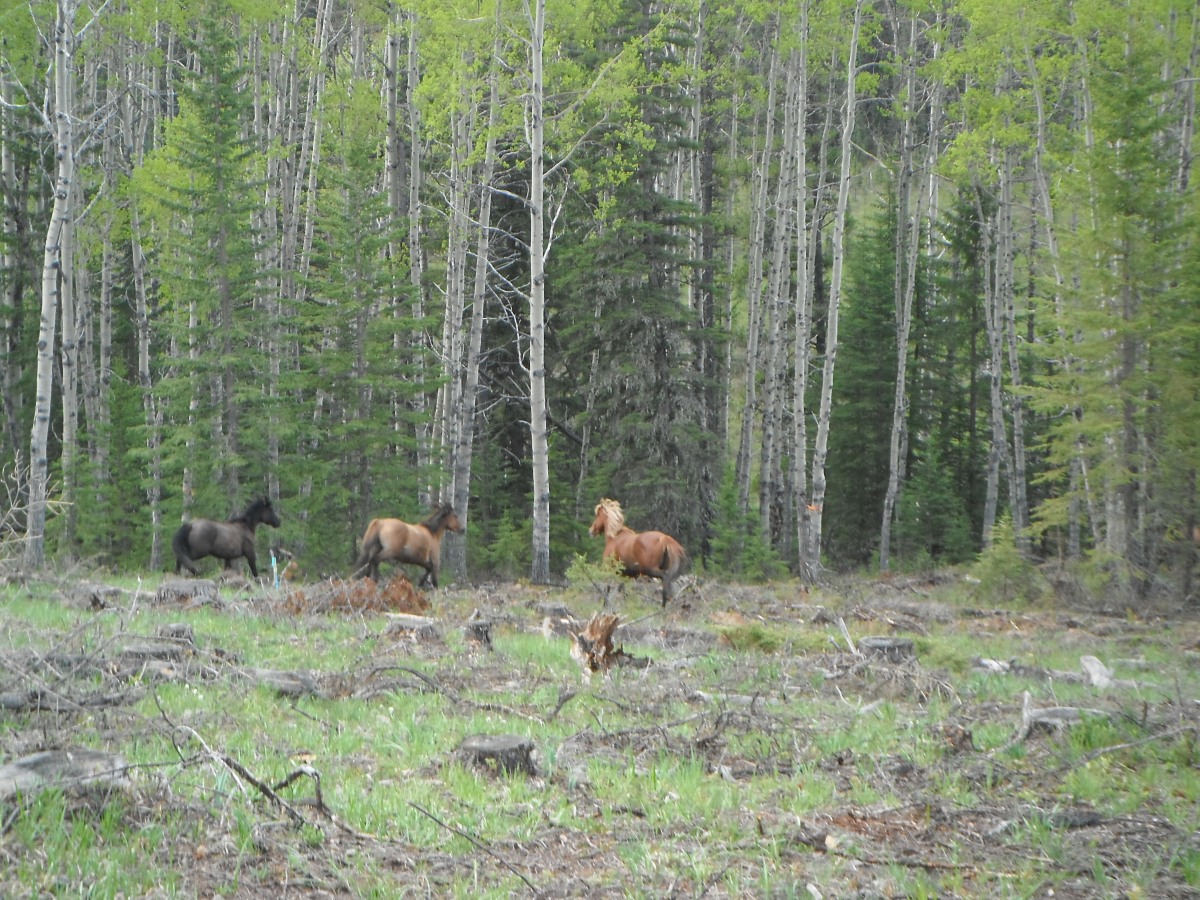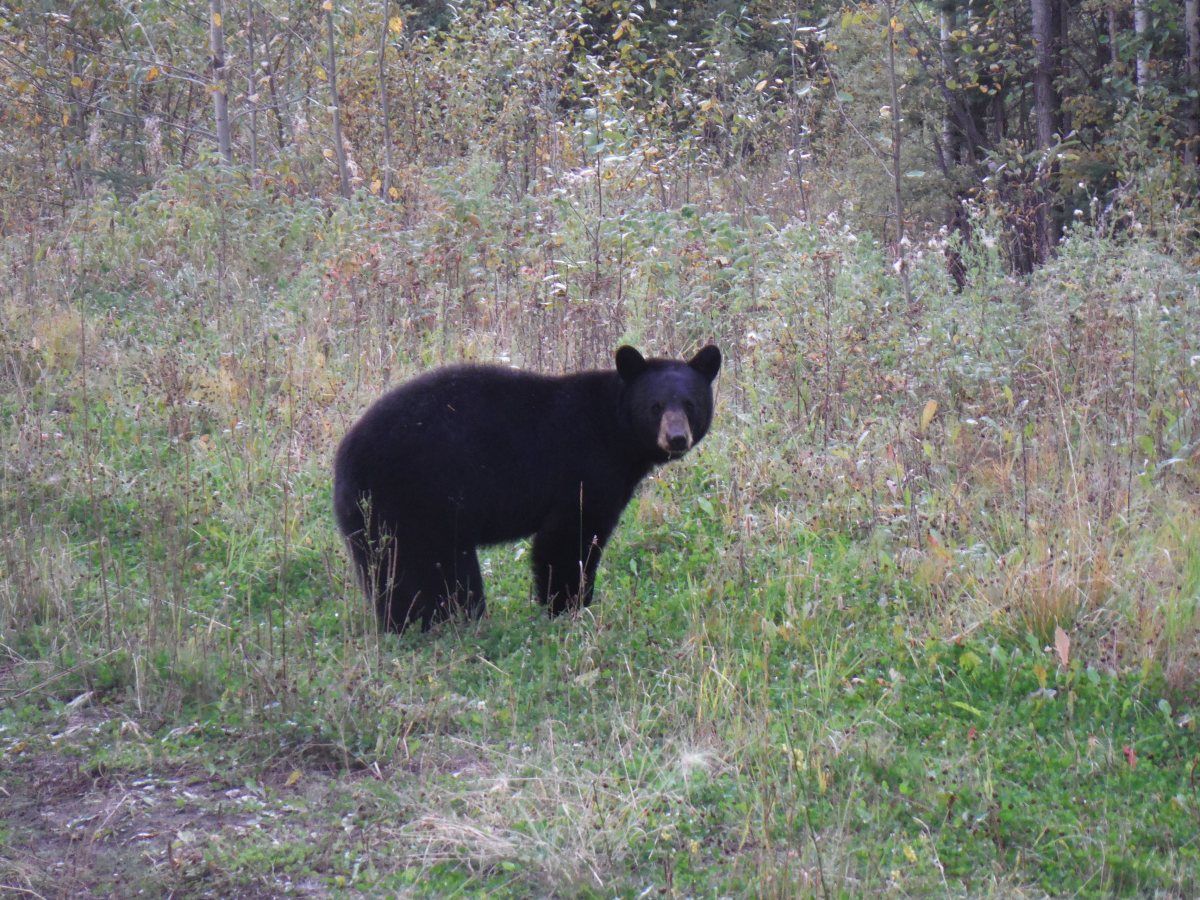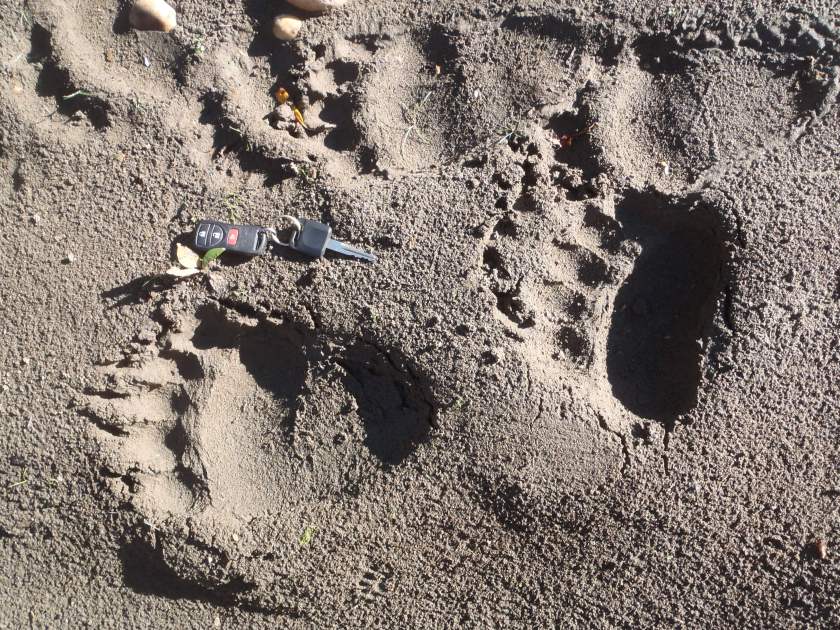As Brian and I headed back to Swan Hills, we turned the corner and saw this fella chilling on the trail! The forest to either side of the trail, having been harvested in the last decade or so, had young trees growing tightly together, making it difficult for the moose to make his escape. We signaled our intent to continue on the path by revving the ATVs and moving slowly toward him. We gave him the time and space he needed to move down the trail and find a safe place to enter the woods. If we had just chased him, he would have become stressed and could decide to charge us. Moose are an underestimated hazard in the field. They are not carnivores, so it’s easy to think they will not be aggressive. In reality, they are one of the “biggest” wildlife hazards out there, both in size and temperament. Today was a good day for all three of us though.
